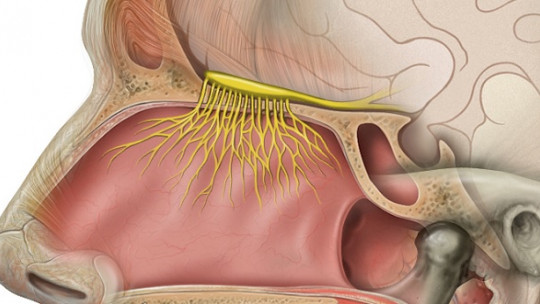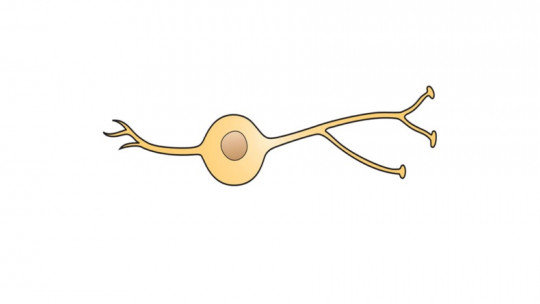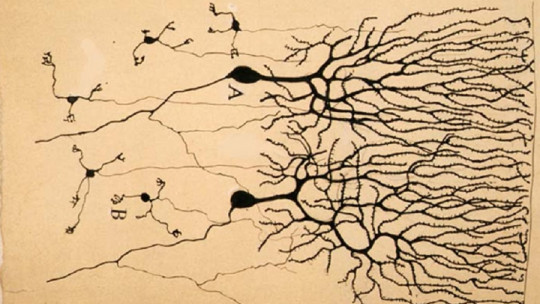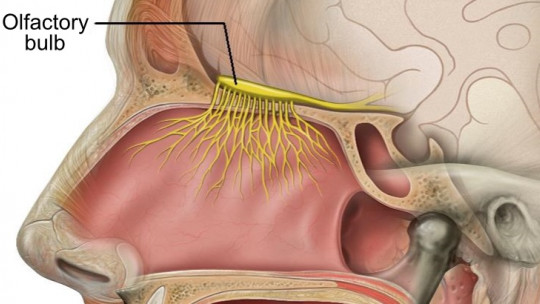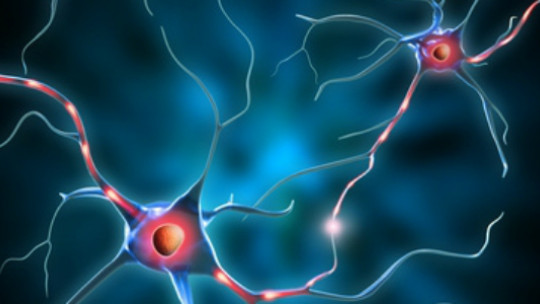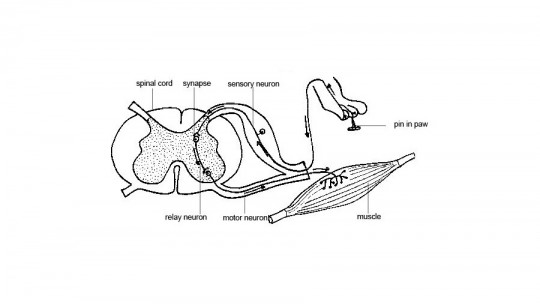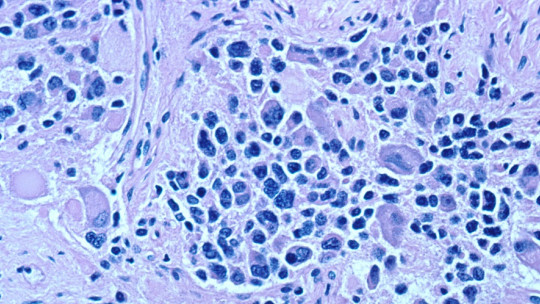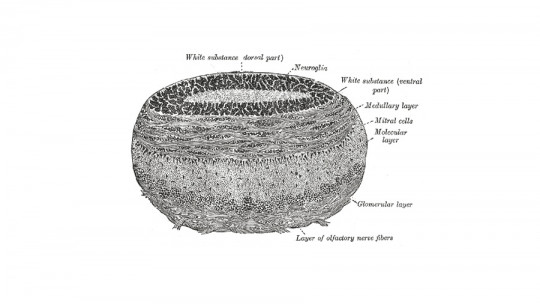
A mitral cell is a type of neuron that is part of the olfactory system
These types of cells are a main output channel of the olfactory bulb and act by sending signals to various peripheral cortical structures. Let’s get to know, in more detail, this type of cells.
What is a mitral cell
Within the olfactory system, the flow of information from the periphery to the mitral cells is mediated by direct synaptic inputs from olfactory sensory neurons
The extensions of the sensory neurons form a bundle of nerve fibers (the olfactory nerve) that transmits information about the volatile compound to the central nervous system, and more specifically to the olfactory bulb. In this structure Information is received mainly by two cell types: mitral cells and tufted cells
Mitral and tufted cells are functionally similar and together they constitute the sensory neurons that with their axons connect the olfactory bulb with the central nervous system.
The olfactory bulb and glomeruli
The sites of contact between primary sensory neurons and cells of the olfactory bulb give rise to a series of spherical structures called glomeruli. These have a relevant role, since it is the place where the information from all the sensory cells that perceive the same volatile compound converges at the same time.
The mitral cells that have received information from the axons of the olfactory neurons are involved in the synapse with the neuropil (the region between several cell bodies or somata of neurons) of the olfactory glomeruli.
After the olfactory bulb, the axons of the mitral cells transmit information to other areas of the brain Among these regions, it is worth highlighting the piriform cortex, an area responsible for detecting odors and involved in the storage of memories; the amygdala, the main nucleus for controlling emotions; and the entorhinal cortex, related to memory, smell and orientation.
Mitral cell morphology
A mitral cell is distinguished by the position of its soma (the cell body) in an ordered row in the mitral cell layer of the olfactory bulb. Generally, they usually show a single primary dendrite (extension of the neuron dedicated to receiving the nervous impulse from other neurons) that projects to a single glomerulus.
Besides, This type of cell shows a few lateral dendrites that project to the outer plexiform layer (region that connects photoreceptor cells and bipolar cells).
The morphology of mitral cells has been an advantage in the first synaptic processing studies carried out since it is possible to independently stimulate both the soma and the main dendrite using electrodes conveniently located in different layers of the olfactory bulb.
Principal functions
Once the information from the odor molecules has been captured, transformed and sent to the olfactory bulb, it is processed in the glomeruli and the mitral cells send that information to the relevant brain regions.
But what happens in the main olfactory information processing nucleus? These are the main functions carried out by the olfactory bulb:
1. Differentiation of odors
The olfactory bulb It is mainly responsible for distinguishing between various types of odors This differentiation is carried out through different activation patterns of neurons responsible for olfactory perception, which react depending on the perceived odor and the shape and structure of the olfactory particles.
2. Emotional information processing
The amygdala, the brain’s main emotion control center, has connections to the olfactory bulb both directly and indirectly, through the primary olfactory cortex or piriform cortex, and allows certain emotions to be linked to certain olfactory stimuli
Furthermore, our sense of smell, unlike other senses such as sight or hearing, does not need to relay to the thalamus; That is why its connection with the limbic system is more direct, generating more powerful and explicit connections, which means that we can more easily evoke intense memories of past experiences through smells.
3. Flavor perception
The senses of smell and taste are closely related and interconnected Many times, we feel like we are tasting something when we are simply sniffing it.
In this sense, the olfactory bulb also plays a relevant role in the perception of flavor for this very reason. An example of how these two senses relate to each other is the inability of people who suffer from anosmia (loss of the sense of smell) to perceive flavors.
Synaptic connections with other cells
Mitral cells play a significant role in the circuit of connections of the olfactory bulb, since they receive information from at least four cell types: olfactory sensory neurons, external tuft cells, periglomerular neurons and granule cells. The first two are excitatory, while the other two are inhibitory.
Through their primary dendrites, mitral cells receive excitatory synapses from olfactory sensory neurons and external tuft cells. In addition, they also receive inhibitory signals from granule cells in their lateral dendrites or in the soma, and from periglomerular cells in the dendritic tuft.
Apparently and according to research, tuft cells receive strong innervation from the olfactory nerve and fire their action potentials near the beginning of inhalation and their firing frequency is relatively insensitive to the concentration of odors; In contrast, mitral cells receive little innervation from the olfactory nerve and strong periglomerular inhibition (around the glomeruli), which delays their firing with respect to tuft cells.
A hypothesis that is used in animals is that mitral cells transform the strength of the olfactory signal into a synchronized code where the concentration of the odor is encoded in the firing rate of action potentials relative to the inhalation cycle.

